Active c. 1099–present Nickname(s) The "Religion" | Allegiance Papacy | |
Headquarters JerusalemRhodesBirguVallettaRome Patron Our Lady of PhilermosJohn the Baptist | ||
Knights hospitaller historical presentation
The Order of Knights of the Hospital of Saint John of Jerusalem (Latin: Ordo Fratrum Hospitalis Sancti Ioannis Hierosolymitani), also known as the Order of Saint John, Order of Hospitallers, Knights Hospitaller, or Hospitallers, is the medieval Catholic military order that continued into the contemporary Sovereign Military Order of Malta, which remains a sovereign subject of international law. It was headquartered variously in the Kingdom of Jerusalem, Rhodes and Malta, until it became known by its current name.
Contents
- Knights hospitaller historical presentation
- Order of st john of jerusalem knights hospitaller malta the americas priory
- Foundation and early history
- Knights of Cyprus and Rhodes
- Knights of Malta
- The Knights in the 16th and 17th centuries Reconquista of the Sea
- Life in Malta
- Turmoil in Europe
- Loss of Malta
- Remnants
- Sovereign Military Order of Malta
- Protestant orders of chivalry
- Mimic self styled orders
- References

The Hospitallers arose, in the early 12th century, at the time of the great monastic reformation, as a group of individuals associated with an Amalfitan hospital in the Muristan district of Jerusalem, dedicated to John the Baptist and founded around 1023 by Gerard Thom to provide care for sick, poor or injured pilgrims coming to the Holy Land. Some scholars, however, consider that the Amalfitan order and hospital were different from Gerard Thom's order and its hospital. After the conquest of Jerusalem in 1099 during the First Crusade, the organisation became a religious and military order under its own Papal charter, charged with the care and defence of the Holy Land. Following the conquest of the Holy Land by Islamic forces, the knights operated from Rhodes, over which they were sovereign, and later from Malta, where they administered a vassal state under the Spanish viceroy of Sicily. The Hospitallers were the smallest group ever to colonise parts of the Americas; at one point in the mid-17th century, they acquired four Caribbean islands, which they turned over to the French in the 1660s.

The knights were weakened in the Protestant Reformation, when rich commanderies of the order in northern Germany and the Netherlands became Protestant and largely separated from the Roman Catholic main stem, remaining separate to this day. The order was disestablished in England, Denmark, Sweden and elsewhere in northern Europe, and it was further damaged by Napoleon's capture of Malta in 1798, following which it became dispersed throughout Europe and Russia. It regained strength during the early 19th century as it redirected itself toward religious and humanitarian causes. In 1834, the order, by this time known as the Sovereign Military Order of Malta, acquired new headquarters in Rome, where it has since been based.
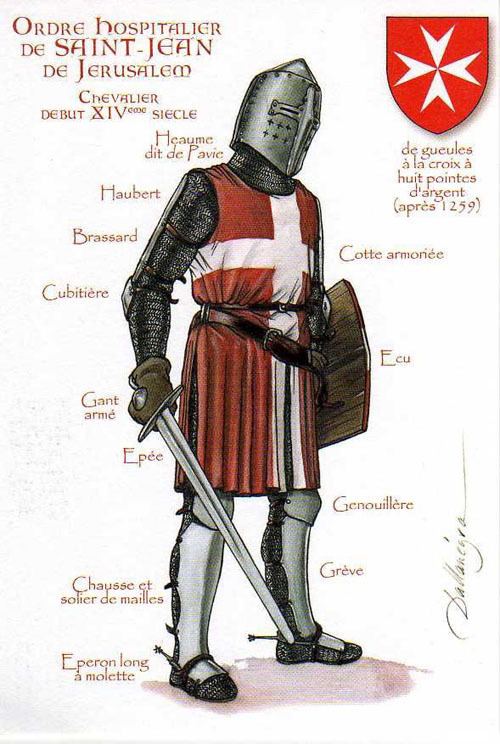
Five contemporary, state-recognised chivalric orders which claim modern inheritance of the Hospitaller tradition all assert that "The Sovereign Military Order of Malta is the original order", and that four non-Roman Catholic orders stem from the same root: Protestant orders exist in Germany, the Netherlands and Sweden, and a non-denominational British revival has its headquarters in the United Kingdom with branches throughout the Commonwealth.

Order of st john of jerusalem knights hospitaller malta the americas priory
Foundation and early history
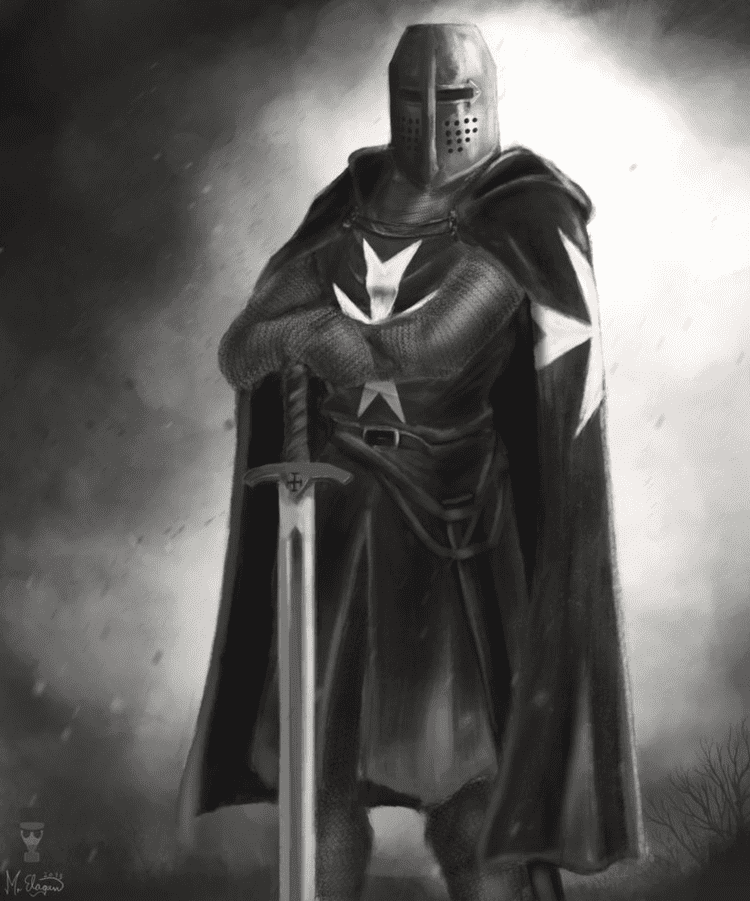
In 603, Pope Gregory I commissioned the Ravennate Abbot Probus, who was previously Gregory's emissary at the Lombard court, to build a hospital in Jerusalem to treat and care for Christian pilgrims to the Holy Land. In 800, Emperor Charlemagne enlarged Probus' hospital and added a library to it. About 200 years later, in 1005, Caliph Al-Hakim bi-Amr Allah destroyed the hospital and three thousand other buildings in Jerusalem. In 1023, merchants from Amalfi and Salerno in Italy were given permission by the Caliph Ali az-Zahir of Egypt to rebuild the hospital in Jerusalem. The hospital, which was built on the site of the monastery of Saint John the Baptist, took in Christian pilgrims traveling to visit the Christian holy sites. It was served by the Order of Saint Benedict.
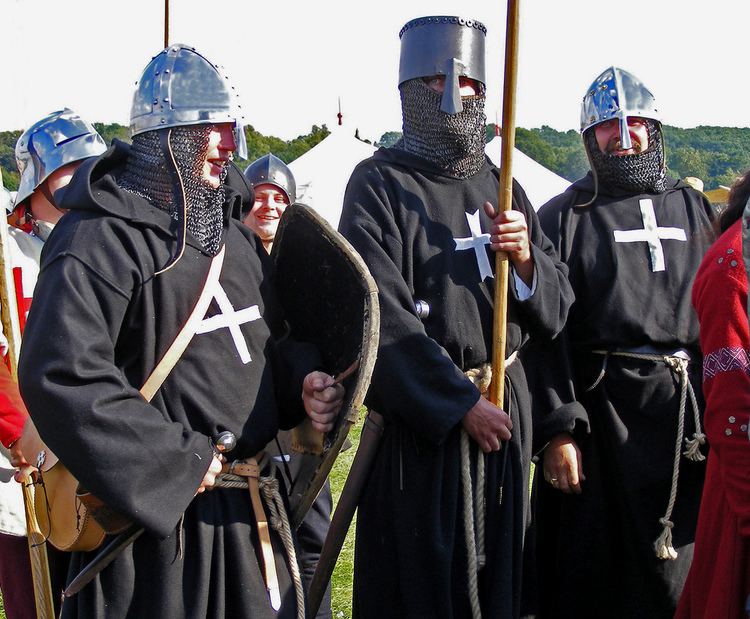
The monastic hospitaller order was founded following the First Crusade by Gerard Thom, whose role as founder was confirmed by the papal bull Pie Postulatio Voluntatis issued by Pope Paschal II in 1113. Gerard acquired territory and revenues for his order throughout the Kingdom of Jerusalem and beyond. Under his successor, Raymond du Puy de Provence, the original hospice was expanded to an infirmary near the Church of the Holy Sepulchre in Jerusalem. Initially the group cared for pilgrims in Jerusalem, but the order soon extended to providing pilgrims with an armed escort, which soon grew into a substantial force. Thus the Order of St. John imperceptibly became military without losing its charitable character.
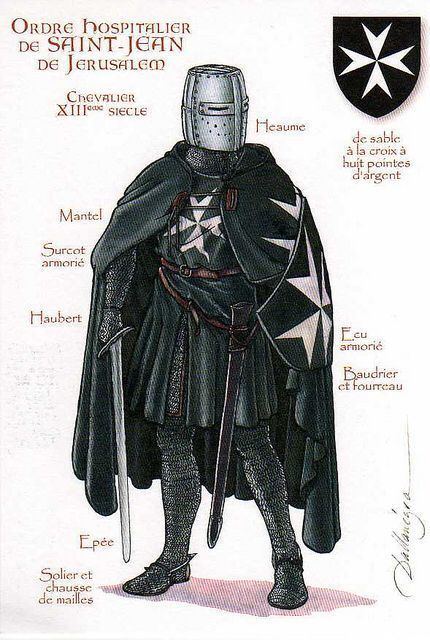
Raymond du Puy, who succeeded Gerard as Master of the Hospital in 1118, organised a militia from the order's members, dividing the order into three ranks: knights, men at arms, and chaplains. Raymond offered the service of his armed troops to Baldwin, and the order from this time participated in the crusades as a military order, in particular distinguishing itself in the Siege of Ascalon of 1153. In 1130, Pope Innocent II gave the order its coat of arms, a silver cross in a field of red (gueulles).
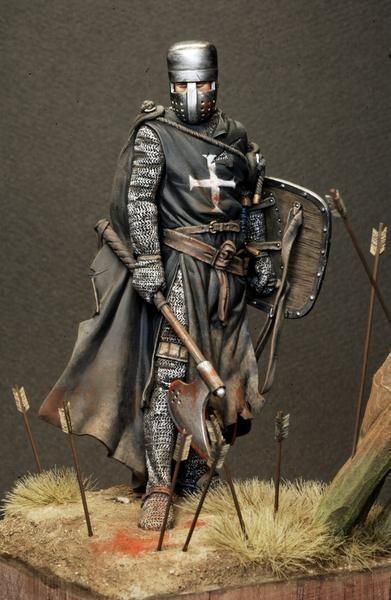
The Hospitallers and the Knights Templar became the most formidable military orders in the Holy Land. Frederick Barbarossa, the Holy Roman Emperor, pledged his protection to the Knights of St. John in a charter of privileges granted in 1185.

The statutes of Roger de Moulins (1187) deal only with the service of the sick; the first mention of military service is in the statutes of the ninth grand master, Fernando Afonso of Portugal (about 1200). In the latter a marked distinction is made between secular knights, externs to the order, who served only for a time, and the professed knights, attached to the order by a perpetual vow, and who alone enjoyed the same spiritual privileges as the other religious. The order numbered three distinct classes of membership: the military brothers, the brothers infirmarians, and the brothers chaplains, to whom was entrusted the divine service.
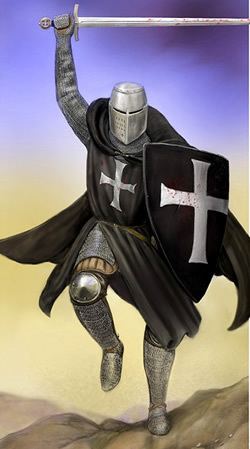
In 1248 Pope Innocent IV (1243–54) approved a standard military dress for the Hospitallers to be worn during battle. Instead of a closed cape over their armour (which restricted their movements), they wore a red surcoat with a white cross emblazoned on it.

Many of the more substantial Christian fortifications in the Holy Land were built by the Templars and the Hospitallers. At the height of the Kingdom of Jerusalem, the Hospitallers held seven great forts and 140 other estates in the area. The two largest of these, their bases of power in the Kingdom and in the Principality of Antioch, were the Krak des Chevaliers and Margat in Syria. The property of the Order was divided into priories, subdivided into bailiwicks, which in turn were divided into commanderies.
As early as the late 12th century the order had begun to achieve recognition in the Kingdom of England and Duchy of Normandy. As a result, buildings such as St John's Jerusalem and the Knights Gate, Quenington in England were built on land donated to the order by local nobility. An Irish house was established at Kilmainham, near Dublin, and the Irish Prior was usually a key figure in Irish public life.
Knights of Cyprus and Rhodes
After the fall of the Kingdom of Jerusalem in 1291 (the city of Jerusalem had fallen in 1187), the Knights were confined to the County of Tripoli and, when Acre was captured in 1291, the order sought refuge in the Kingdom of Cyprus. Finding themselves becoming enmeshed in Cypriot politics, their Master, Guillaume de Villaret, created a plan of acquiring their own temporal domain, selecting Rhodes to be their new home, part of the Byzantine empire. His successor, Foulques de Villaret, executed the plan, and on 15 August 1310, after over four years of campaigning, the city of Rhodes surrendered to the knights. They also gained control of a number of neighbouring islands and the Anatolian port of Halicarnassus and the island of Kastellorizo.
Pope Clement V dissolved the Hospitallers' rival order, the Knights Templar, in 1312 with a series of papal bulls, including the Ad providam bull that turned over much of their property to the Hospitallers.
The holdings were organised into eight "Tongues" or Langues, one each in Crown of Aragon, Auvergne, Crown of Castile, Kingdom of England, France, Holy Roman Empire, Italy and Provence. Each was administered by a Prior or, if there was more than one priory in the langue, by a Grand Prior.
At Rhodes, and later Malta, the resident knights of each langue were headed by a baili. The English Grand Prior at the time was Philip De Thame, who acquired the estates allocated to the English langue from 1330 to 1358. In 1334, the Knights of Rhodes defeated Andronicus and his Turkish auxiliaries. In the 14th century, there were several other battles in which they fought.
On Rhodes the Hospitallers, by then also referred to as the Knights of Rhodes, were forced to become a more militarised force, fighting especially with the Barbary pirates. They withstood two invasions in the 15th century, one by the Sultan of Egypt in 1444 and another by the Ottoman Sultan Mehmed the Conqueror in 1480 who, after capturing Constantinople and defeating the Byzantine Empire in 1453, made the Knights a priority target.
In 1494 they created a stronghold on the peninsula of Halicarnassus (presently Bodrum). They used pieces of the partially destroyed Mausoleum at Halicarnassus, one of the Seven Wonders of the Ancient World, to strengthen their rampart, the Petronium.
In 1522, an entirely new sort of force arrived: 400 ships under the command of Sultan Suleiman the Magnificent delivered 100,000 men to the island (200,000 in other sources). Against this force the Knights, under Grand Master Philippe Villiers de L'Isle-Adam, had about 7,000 men-at-arms and their fortifications. The siege lasted six months, at the end of which the surviving defeated Hospitallers were allowed to withdraw to Sicily. Despite the defeat, both Christians and Muslims seem to have regarded the conduct of Villiers de L'Isle-Adam as extremely valiant, and the Grand Master was proclaimed a Defender of the Faith by Pope Adrian VI.
Knights of Malta
After seven years of moving from place to place in Europe, the knights gained fixed quarters in 1530 when Charles I of Spain, as King of Sicily, gave them Malta, Gozo and the North African port of Tripoli in perpetual fiefdom in exchange for an annual fee of a single Maltese falcon (the Tribute of the Maltese Falcon), which they were to send on All Souls' Day to the King's representative, the Viceroy of Sicily.
The Hospitallers continued their actions against the Muslims and especially the Barbary pirates. Although they had only a few ships they quickly drew the ire of the Ottomans, who were unhappy to see the order resettled. In 1565 Suleiman sent an invasion force of about 40,000 men to besiege the 700 knights and 8,000 soldiers and expel them from Malta and gain a new base from which to possibly launch another assault on Europe.
At first the battle went as badly for the Hospitallers as Rhodes had: most of the cities were destroyed and about half the knights killed. On 18 August the position of the besieged was becoming desperate: dwindling daily in numbers, they were becoming too feeble to hold the long line of fortifications. But when his council suggested the abandonment of Birgu and Senglea and withdrawal to Fort St. Angelo, Grand Master Jean Parisot de Valette refused.
The Viceroy of Sicily had not sent help; possibly the Viceroy's orders from Philip II of Spain were so obscurely worded as to put on his own shoulders the burden of the decision whether to help the Order at the expense of his own defences. A wrong decision could mean defeat and exposing Sicily and Naples to the Ottomans. He had left his own son with La Valette, so he could hardly be indifferent to the fate of the fortress. Whatever may have been the cause of his delay, the Viceroy hesitated until the battle had almost been decided by the unaided efforts of the knights, before being forced to move by the indignation of his own officers.
On 23 August came yet another grand assault, the last serious effort, as it proved, of the besiegers. It was thrown back with the greatest difficulty, even the wounded taking part in the defence. The plight of the Turkish forces, however, was now desperate. With the exception of Fort Saint Elmo, the fortifications were still intact. Working night and day the garrison had repaired the breaches, and the capture of Malta seemed more and more impossible. Many of the Ottoman troops in crowded quarters had fallen ill over the terrible summer months. Ammunition and food were beginning to run short, and the Ottoman troops were becoming increasingly dispirited by the failure of their attacks and their losses. The death on 23 June of skilled commander Dragut, a corsair and admiral of the Ottoman fleet, was a serious blow. The Turkish commanders, Piali Pasha and Lala Mustafa Pasha, were careless. They had a huge fleet which they used with effect on only one occasion. They neglected their communications with the African coast and made no attempt to watch and intercept Sicilian reinforcements.
On 1 September they made their last effort, but the morale of the Ottoman troops had deteriorated seriously and the attack was feeble, to the great encouragement of the besieged, who now began to see hopes of deliverance. The perplexed and indecisive Ottomans heard of the arrival of Sicilian reinforcements in Mellieħa Bay. Unaware that the force was very small, they broke off the siege and left on 8 September. The Great Siege of Malta may have been the last action in which a force of knights won a decisive victory.
When the Ottomans departed, the Hospitallers had but 600 men able to bear arms. The most reliable estimate puts the number of the Ottoman army at its height at some 40,000 men, of whom 15,000 eventually returned to Constantinople. The siege is portrayed vividly in the frescoes of Matteo Pérez in the Hall of St. Michael and St. George, also known as the Throne Room, in the Grandmaster's Palace in Valletta; four of the original modellos, painted in oils by Perez d'Aleccio between 1576 and 1581, can be found in the Cube Room of the Queen's House at Greenwich, London. After the siege a new city had to be built: the present capital city of Malta, named Valletta in memory of the Grand Master who had withstood the siege.
In 1607, the Grand Master of the Hospitallers was granted the status of Reichsfürst (Prince of the Holy Roman Empire), even though the Order's territory was always south of the Holy Roman Empire. In 1630, he was awarded ecclesiastic equality with cardinals, and the unique hybrid style His Most Eminent Highness, reflecting both qualities qualifying him as a true Prince of the Church.
The Knights in the 16th and 17th centuries: Reconquista of the Sea
Following the knights' relocation on Malta, they had found themselves devoid of their initial reason for existence: assisting and joining the crusades in the Holy Land was now impossible, for reasons of military and financial strength along with geographical position. With dwindling revenues from European sponsors no longer willing to support a costly and meaningless organization, the knights turned to policing the Mediterranean from the increased threat of piracy, most notably from the threat of the Ottoman-endorsed Barbary pirates operating from the North African coastline. Boosted towards the end of the 16th century by an air of invincibility following the successful defence of their island in 1565 and compounded by the Christian victory over the Ottoman fleet in the Battle of Lepanto in 1571, the knights set about protecting Christian merchant shipping to and from the Levant and freeing the captured Christian slaves who formed the basis of the Barbary corsairs' piratical trading and navies. This became known as the "corso".
Yet the Order soon struggled on a now reduced income. By policing the Mediterranean they augmented the assumed responsibility of the traditional protectors of the Mediterranean, the naval city states of Venice, Genoa, and Pisa. Further compounding their financial woes; over the course of this period the exchange rate of the local currencies against the 'scudo' that were established in the late 16th century gradually became outdated, meaning the knights were gradually receiving less at merchant factories. Economically hindered by the barren island they now inhabited, many knights went beyond their call of duty by raiding Muslim ships. More and more ships were plundered, from the profits of which many knights lived idly and luxuriously, taking local women to be their wives and enrolling in the navies of France and Spain in search of adventure, experience, and yet more money.
The knights’ changing attitudes were coupled with the effects of the Reformation and Counter-Reformation and the lack of stability from the Roman Catholic Church. All this affected the knights strongly as the 16th and 17th centuries saw a gradual decline in the religious attitudes of many of the Christian peoples of Europe (and, concomitantly, the importance of a religious army), and thus in the Knights’ regular tributes from European nations. That the knights, a chiefly Roman Catholic military order, pursued the readmittance of England as one of its member states — the Order there had been suppressed, along with monasteries, under king Henry VIII of England — upon the succession of the Protestant queen Elizabeth I of England aptly demonstrates the new religious tolerance within the Order. For a time, the Order even possessed a German langue which was part Protestant or Evangelical and part Roman Catholic.
The perceived moral decline that the knights underwent over the course of this period is best highlighted by the decision of many knights to serve in foreign navies and become "the mercenary sea-dogs of the 14th to 17th centuries", with the French Navy proving the most popular destination. This decision went against the knights' cardinal reason for existence, in that by serving a European power directly they faced the very real possibility that they would be fighting against another Roman Catholic force, as in the few Franco-Spanish naval skirmishes that occurred in this period. The biggest paradox is the fact that for many years the French remained on amicable terms with the Ottoman Empire, the Knights' greatest and bitterest foe and purported sole purpose for existence. Paris signed many trade agreements with the Ottomans and agreed to an informal (and ultimately ineffective) cease-fire between the two states during this period. That the Knights associated themselves with the allies of their sworn enemies shows their moral ambivalence and the new commercial-minded nature of the Mediterranean in the 17th century. Serving in a foreign navy, in particular that of the French, gave the Knights the chance to serve the Church and for many, their King, to increase their chances of promotion in either their adopted navy or in Malta, to receive far better pay, to stave off their boredom with frequent cruises, to embark on the highly preferable short cruises of the French Navy over the long caravans favoured by the Maltese, and if the Knight desired, to indulge in some of the pleasures of a traditional debauched seaport. In return, the French gained and quickly assembled an experienced navy to stave off the threat of the Spanish and their Habsburg masters. The shift in attitudes of the Knights over this period is ably outlined by Paul Lacroix who states:
Inflated with wealth, laden with privileges which gave them almost sovereign powers ... the order at last became so demoralised by luxury and idleness that it forgot the aim for which it was founded, and gave itself up for the love of gain and thirst for pleasure. Its covetousness and pride soon became boundless. The Knights pretended that they were above the reach of crowned heads: they seized and pillaged without concern of the property of both infidels and Christians".
With the knights' exploits growing in fame and wealth, the European states became more complacent about the Order, and more unwilling to grant money to an institution that was perceived to be earning a healthy sum on the high seas. Thus a vicious cycle occurred, increasing the raids and reducing the grants received from the nation-states of Christendom to such an extent that the balance of payments on the island had become dependent on conquest. The European powers lost interest in the knights as they focused their intentions largely on one another during the Thirty Years' War. In February 1641 a letter was sent from an unknown dignitary in the Maltese capital of Valletta to the knights' most trustworthy ally and benefactor, Louis XIV of France, stating the Order's troubles:
Italy provides us with nothing much; Bohemia and Germany hardly anything, and England and the Netherlands for a long time now nothing at all. We only have something to keep us going, Sire, in your own Kingdom and in Spain.
It is important to note that the Maltese authorities would neglect to mention the fact that they were making a substantial profit policing the seas and seizing "infidel" ships and cargoes. The authorities on Malta immediately recognised the importance of corsairing to their economy and set about encouraging it, as despite their vows of poverty, the Knights were granted the ability to keep a portion of the spoglio, which was the prize money and cargo gained from a captured ship, along with the ability to fit out their own galleys with their new wealth.
The great controversy that surrounded the knights' corso was their insistence on their policy of 'vista'. This enabled the Order to stop and board all shipping suspected of carrying Turkish goods and confiscate the cargo to be re-sold at Valletta, along with the ship's crew, who were by far the most valuable commodity on the ship. Naturally many nations claimed to be victims of the knights' over-eagerness to stop and confiscate any goods remotely connected to the Turks. In an effort to regulate the growing problem, the authorities in Malta established a judicial court, the Consiglio del Mer, where captains who felt wronged could plead their case, often successfully. The practice of issuing privateering licenses and thus state endorsement, which had been in existence for a number of years, was tightly regulated as the island's government attempted to haul in the unscrupulous knights and appease the European powers and limited benefactors. Yet these efforts were not altogether successful, as the Consiglio del Mer received numerous complaints around the year 1700 of Maltese piracy in the region. Ultimately, the rampant over-indulgence in privateering in the Mediterranean was to be the knights' downfall in this particular period of their existence as they transformed from serving as the military outpost of a united Christendom to becoming another nation-state in a commercially oriented continent soon to be overtaken by the trading nations of the North Sea.
Life in Malta
Having gained Malta, the knights stayed for 268 years, transforming what they called "merely a rock of soft sandstone" into a flourishing island with mighty defences and a capital city (Valletta) known as Superbissima, "Most Proud", amongst the great powers of Europe. However, "the indigenous islanders had not particularly enjoyed the rule of the Knights of St John." Most Knights were French and excluded the native islanders from important positions. They were especially loathed for the way they took advantage of the native women.
In 1301, the Order was organized in seven langues; by order of precedence, Provence, Auvergne, France, Aragon, Italy, England, and Germany. In 1462, the Langue of Aragon was divided into Castile-Portugal and Aragon-Navarre. The English Langue went into abeyance after the order's properties were taken over by Henry VIII in 1540. In 1782, it was revived as the Anglo-Bavarian Langue, containing Bavarian and Polish priories. The structure of langues was replaced in the late 19th century by a system of national associations.
When the Knights first arrived, the natives were apprehensive about their presence and viewed them as arrogant intruders. The Maltese were excluded from serving in the order. The Knights were even generally dismissive of the Maltese nobility. However, the two groups coexisted peacefully, since the Knights boosted the economy, were charitable, and protected against Muslim attacks.
Not surprisingly, hospitals were among the first projects to be undertaken on Malta, where French soon supplanted Italian as the official language (though the native inhabitants continued to speak Maltese among themselves). The knights also constructed fortresses, watch towers, and naturally, churches. Its acquisition of Malta signalled the beginning of the Order's renewed naval activity.
The building and fortification of Valletta, named for Grand Master la Valette, was begun in 1566, soon becoming the home port of one of the Mediterranean's most powerful navies. Valletta was designed by Francesco Laparelli, a military engineer, and his work was then taken up by Girolamo Cassar. The city was completed in 1571. The island's hospitals were expanded as well. The Sacra Infermeria could accommodate 500 patients and was famous as one of the finest in the world. In the vanguard of medicine, the Hospital of Malta included Schools of Anatomy, Surgery and Pharmacy. Valletta itself was renowned as a centre of art and culture. The Conventual Church of St. John, completed in 1577, contains works by Caravaggio and others.
In Europe, most of the Order's hospitals and chapels survived the Reformation, though not in Protestant or Evangelical countries. In Malta, meanwhile, the Public Library was established in 1761. The University was founded seven years later, followed, in 1786, by a School of Mathematics and Nautical Sciences. Despite these developments, some of the Maltese grew to resent the Order, which they viewed as a privileged class. This even included some of the local nobility, who were not admitted to the Order.
In Rhodes, the knights had been housed in auberges (inns) segregated by Langues. This structure was maintained in Birgu (1530–1571) and then Valletta (from 1571). The auberges in Birgu remain, mostly undistinguished 16th-century buildings. Valletta still has the auberges of Castille (1574; renovated 1741 by Grand Master de Vilhena, now the Prime Minister's offices), Italy (renovated 1683 by Grand Master Carafa, now the Malta Tourism Authority), Aragon (1571, now Ministry for EU Affairs), Bavaria (former Palazzo Carnerio, purchased in 1784 for the newly formed Langue, now used as the Government Property Department) and Provence (now National Museum of Archaeology). In the Second World War, the auberge d'Auvergne was damaged (and later replaced by Law Courts) and the auberge de France was destroyed.
In 1604, each Langue was given a chapel in the conventual church of Saint John and the arms of the Langue appear in the decoration on the walls and ceiling:
Turmoil in Europe
Even as it survived on Malta, the Order lost many of its European holdings during the Protestant Reformation. The property of the English branch was confiscated in 1540. The German Bailiwick of Brandenburg became Lutheran in 1577, then more broadly Evangelical, but continued to pay its financial contribution to the Order until 1812, when the Protector of the Order in Prussia, King Frederick William III, turned it into an order of merit; in 1852, his son and successor as Protector, King Frederick William IV of Prussia, restored the Johanniterorden to its continuing place as the chief non-Roman Catholic branch of the Knights Hospitaller.
The Knights of Malta had a strong presence within the Imperial Russian Navy and the pre-revolutionary French Navy. When Phillippe de Longvilliers de Poincy was appointed governor of the French colony on Saint Kitts in 1639, he was a prominent Knight of St. John and dressed his retinue with the emblems of the Order. In 1651, the knights bought from the Compagnie des Îles de l'Amérique the islands of Sainte-Christophe, Saint Martin, and Saint Barthélemy. The Order's presence in the Caribbean was eclipsed with De Poincy's death in 1660. He had also bought the island of Saint Croix as his personal estate and deeded it to the Knights of St. John. In 1665, the order sold their Caribbean possessions to the French West India Company, ending the Order's presence in that region.
The decree of the French National Assembly in 1789 abolishing feudalism in France also abolished the Order in France:
V. Tithes of every description, as well as the dues which have been substituted for them, under whatever denomination they are known or collected (even when compounded for), possessed by secular or regular congregations, by holders of benefices, members of corporations (including the Order of Malta and other religious and military orders), as well as those devoted to the maintenance of churches, those impropriated to lay persons and those substituted for the portion congrue, are abolished (...)
The French Revolutionary Government seized the assets and properties of the Order in France in 1792.
Loss of Malta
Their Mediterranean stronghold of Malta was captured by Napoleon in 1798 during his expedition to Egypt. Napoleon demanded from Grand Master Ferdinand von Hompesch zu Bolheim that his ships be allowed to enter the port and to take on water and supplies. The Grand Master replied that only two foreign ships could be allowed to enter the port at a time. Bonaparte, aware that such a procedure would take a very long time and would leave his forces vulnerable to Admiral Nelson, immediately ordered a cannon fusillade against Malta. The French soldiers disembarked in Malta at seven points on the morning of 11 June and attacked. After several hours of fierce fighting, the Maltese in the west were forced to surrender.
Napoleon opened negotiations with the fortress capital of Valletta. Faced with vastly superior French forces and the loss of western Malta, the Grand Master negotiated a surrender to the invasion. Hompesch left Malta for Trieste on 18 June. He resigned as Grand Master on 6 July 1799.
The knights were dispersed, though the order continued to exist in a diminished form and negotiated with European governments for a return to power. The Russian Emperor, Paul I, gave the largest number of knights shelter in Saint Petersburg, an action which gave rise to the Russian tradition of the Knights Hospitaller and the Order's recognition among the Russian Imperial Orders. The refugee knights in Saint Petersburg proceeded to elect Tsar Paul as their Grand Master – a rival to Grand Master von Hompesch until the latter's abdication left Paul as the sole Grand Master. Grand Master Paul I created, in addition to the Roman Catholic Grand Priory, a "Russian Grand Priory" of no less than 118 Commanderies, dwarfing the rest of the Order and open to all Christians. Paul's election as Grand Master was, however, never ratified under Roman Catholic canon law, and he was the de facto rather than de jure Grand Master of the Order.
By the early 19th century, the order had been severely weakened by the loss of its priories throughout Europe. Only 10% of the order's income came from traditional sources in Europe, with the remaining 90% being generated by the Russian Grand Priory until 1810. This was partly reflected in the government of the Order being under Lieutenants, rather than Grand Masters, in the period 1805 to 1879, when Pope Leo XIII restored a Grand Master to the order. This signaled the renewal of the order's fortunes as a humanitarian and religious organization.
On 19 September 1806, the Swedish government offered the sovereignty of the island of Gotland to the Order. The offer was rejected since it would have meant the Order renouncing their claim to Malta.
Remnants
In August 2013, the Israel Antiquities Authority announced that the 150,000 square feet (14,000 m2) Hospitaller hospital, built between 1099 and 1291, with permission from the Muslim authorities, had been identified in the Christian Quarter of the Old City of Jerusalem. It was possible to accommodate up to 2,000 patients, who came from all religious groups, and Jewish patients received kosher food. It also served as an orphanage, with these children often becoming Hospitallers when adult. The remaining vaulted area was discovered during excavations for a restaurant, and the preserved building will be incorporated in the project.
Sovereign Military Order of Malta
In 1834, the order settled in Rome. Hospital work, the original work of the order, became once again its main concern. The Order's hospital and welfare activities, undertaken on a considerable scale in World War I, were greatly intensified and expanded in World War II under the Grand Master Fra' Ludovico Chigi Albani della Rovere (Grand Master 1931–1951).
The Sovereign Military Hospitaller Order of Saint John of Jerusalem, of Rhodes and of Malta, better known as the Sovereign Military Order of Malta (SMOM), is a Roman Catholic religious order and the world's oldest surviving order of chivalry. Its sovereign status is recognised by membership in numerous international bodies and observer status at the United Nations and others.
The Order maintains diplomatic relations with 106 countries, official relations with 6 others and with the European Union, permanent observer missions to the United Nations and its specialised agencies, and delegations or representations to many other international organizations. It issues its own passports, currency, stamps and even vehicle registration plates. The Sovereign Military Order of Malta has a permanent presence in 120 countries, with 12 Grand Priories and Sub-Priories and 47 national Associations, as well as numerous hospitals, medical centres, day care centres, first aid corps, and specialist foundations, which operate in 120 countries. Its 13,500 members and 80,000 volunteers and over 25,000 medical personnel – doctors, nurses and paramedics – are dedicated to the care of the poor, the sick, the elderly, the disabled, the homeless, terminal patients, lepers, and all those who suffer. The Order is especially involved in helping victims of armed conflicts and natural disasters by providing medical assistance, caring for refugees, and distributing medicines and basic equipment for survival.
The Sovereign Military Order of Malta established a mission in Malta, after signing an agreement with the Maltese Government which granted the Order the exclusive use of Fort St. Angelo for a term of 99 years. Today, after restoration, the Fort hosts historical and cultural activities related to the Order of Malta.
Protestant orders of chivalry
Following the Protestant Reformation, the German commanderies of in the Margraviate of Brandenburg declared their continued adherence to the Order of Saint John, while converting to Protestantism, in what was developed as the Order of Saint John of the Bailiwick of Brandenburg. Succeeding as such until today, it forms an order of chivalry under the protection of Prince Oscar of Prussia (born 1959).
From Germany, this Protestant branch spread by membership into other countries in Europe, such as Hungary, Poland, the Netherlands, Sweden, Finland, Denmark, Switzerland, France, Austria, United Kingdom, Italy, United States, Canada, Mexico, Colombia, Venezuela, Namibia, South Africa, and Australia.
In England, almost all of the order's property was confiscated by King Henry VIII during the Dissolution of the Monasteries during the Reformation. Although never formally suppressed, this effectively caused the activities of the English Langue of the order to come to an end.
In 1831, a British order was founded by European aristocrats claiming (possibly without authority) to be acting on behalf of the order. This order in time became known as the Most Venerable Order of Saint John, receiving a royal charter from Queen Victoria in 1888, before expanding throughout the United Kingdom, the British Commonwealth and the United States. Nowadays, the British Most Venerable Order of Saint John's best known activities are running the St. John Ambulance Brigade and the Saint John Eye Hospital in Jerusalem. The Most Venerable Order of Saint John has maintained a presence in Malta since the late 19th century.
The Dutch and Swedish commanderies after World War II became independent orders under the protection of their respective monarchs. In the Order of Saint John in the Netherlands, the Dutch monarch is an Honorary Commander; in the Order of St John in Sweden is protected by King Carl XVI Gustaf of Sweden.
All three Protestant orders, the German, Dutch, and Swedish, are in formalised co-operation under the Alliance of the Orders of Saint John of Jerusalem, founded in 1961 by the Order of Saint John of the Bailiwick of Brandenburg.
Although modern establishments, inasfar as meeting the traditional conditions to be considered dynastic orders of chivalry under legitimate respective fount of honour, they enjoy recognition by the International Commission on Orders of Chivalry (2016). Nonetheless, however, notably all the modern Protestant orders remain independent from and unaffiliated by the original Catholic Sovereign Military Order of Malta.
Mimic self-styled orders
Following the end of World War II, and taking advantage of the lack of State Orders in the Italian Republic, an Italian called himself a Polish Prince and did a brisk trade in Maltese crosses as the Grand Prior of the fictitious "Grand Priory of Podolia" until successfully prosecuted for fraud. Another fraud claimed to be the Grand Prior of the Holy Trinity of Villeneuve, but gave up after a police visit, although the organisation resurfaced in Malta in 1975, and then by 1978 in the USA, where it still continues.
The large passage fees collected by the American Association of SMOM in the early 1950s may well have tempted a man named Charles Pichel to create his own "Sovereign Order of St. John of Jerusalem, Knights Hospitaller" in 1956. Pichel avoided the problems of being an imitation of SMOM by giving his organization a mythical history, claiming that the American organization he led had been founded within the Russian tradition of the Knights Hospitaller in 1908—a spurious claim, but which nevertheless misled many including some academics. In truth, the foundation of his organisation had no connection to the Russian tradition of the Knights Hospitaller. Once created, the attraction of Russian Nobles into membership of Pichel's 'Order' lent some plausibility to his claims.
These organizations have led to scores of other self-styled orders. Another self-styled Order, based in California, gained a substantial following under leadership of the late Robert Formhals, who for some years, and with the support of historical organisations such as The Augustan Society, claimed to be a Polish prince of the House of Sanguszko.
